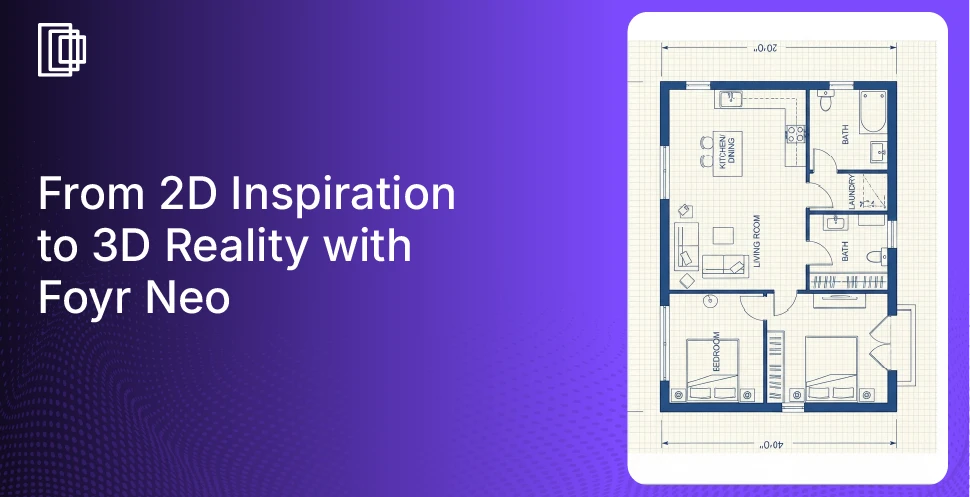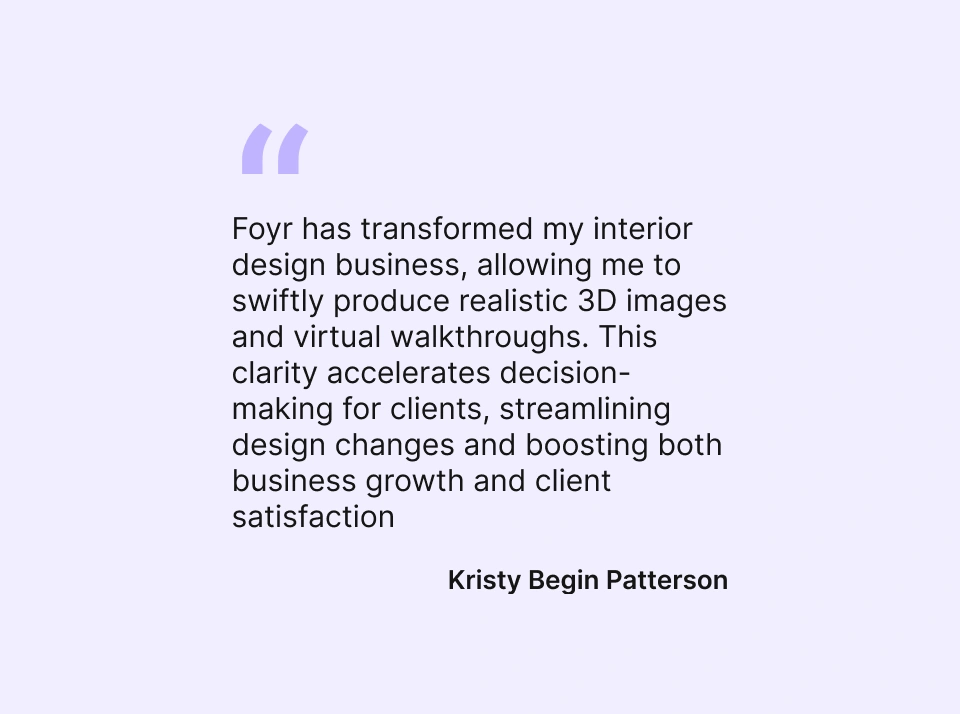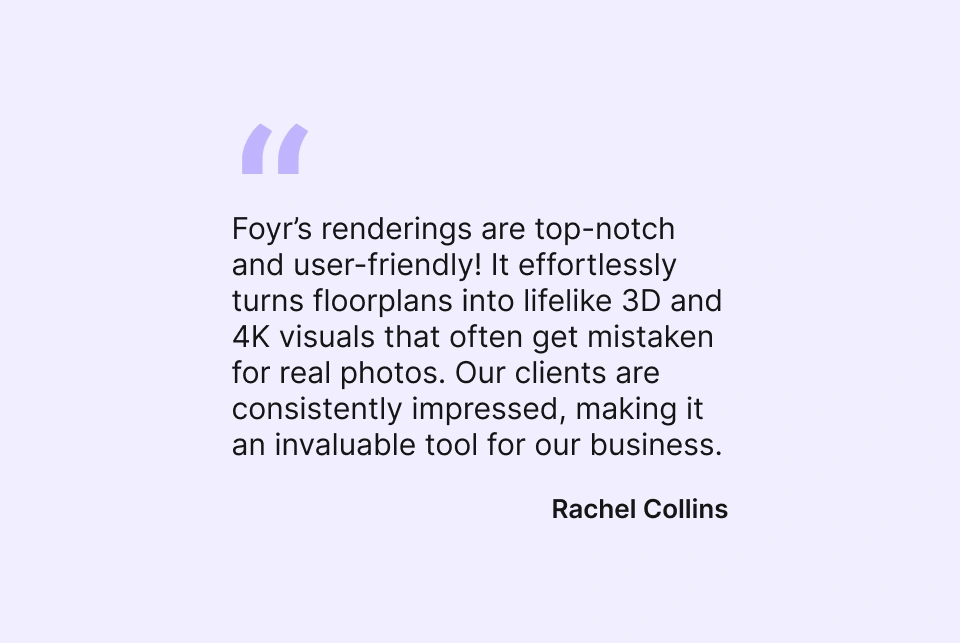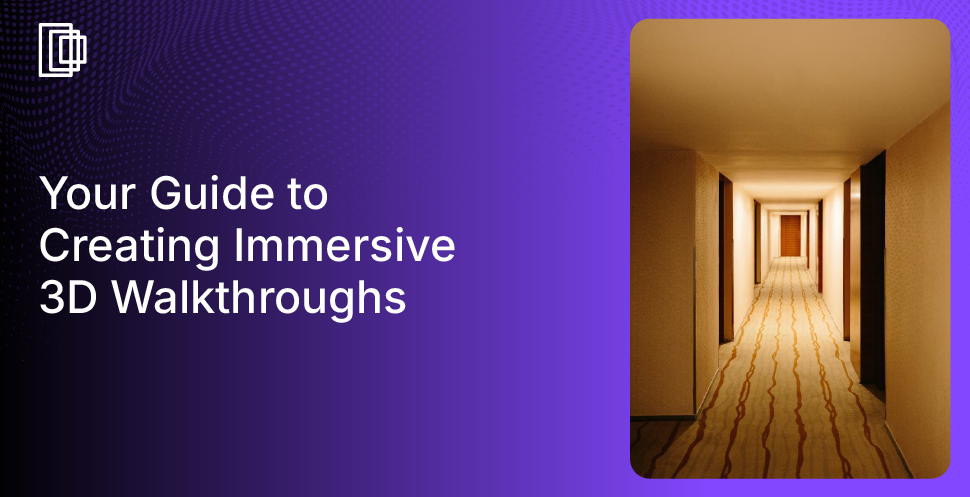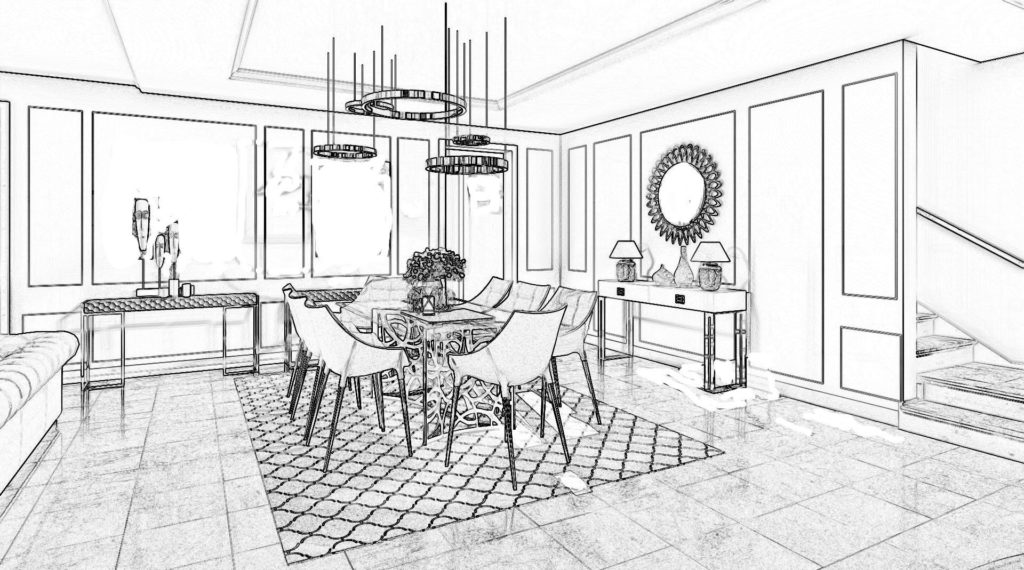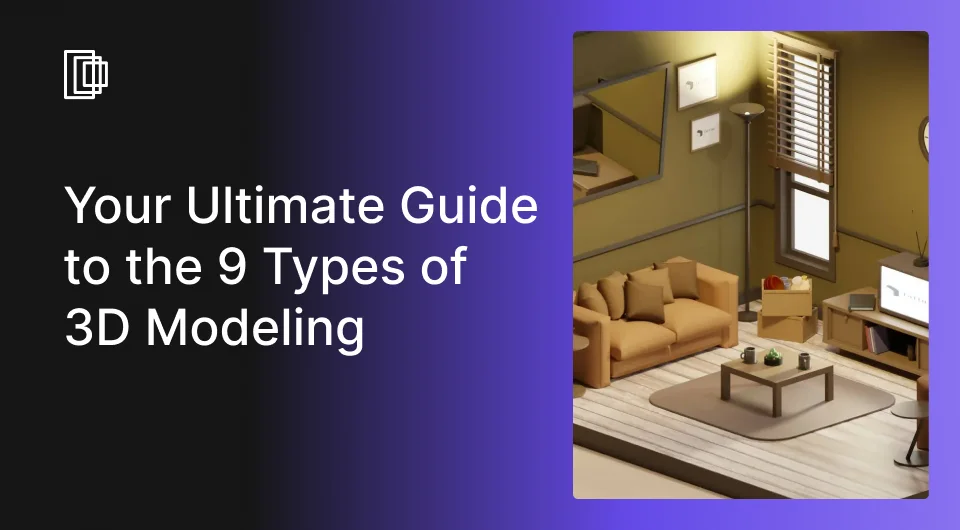Interior design has always been about bridging imagination and reality. A client’s idea might begin with a Pinterest board, an Instagram post, or even a photograph of a boutique piece they spotted while traveling. But until now, translating these inspirations into workable 3D models inside a design platform was either painfully slow or simply impossible.
At Foyr Neo, we have heard this challenge voiced by our users time and again. ‘Can I import this product directly into Neo?’, ‘My client shared a moodboard. How do I replicate it exactly in my design?’, and ‘Is there a way to add this trending collection before my next presentation?’ are some of the questions that we have continued to deal with.
Even with one of the most comprehensive catalogs in the industry, the truth was that the pace of design trends always outstripped the pace of catalog expansion. For us, that was a barrier to creativity that we just had to fix.
This is why we created 2D to 3D, a new feature that removes the dependency on catalogues altogether. On Foyr Neo, designers can now upload a simple 2D image, whether a product photo, a magazine clipping, or a sketch, and see it transformed into a functional 3D model within seconds.
 The Designer-First Approach
The Designer-First Approach
We knew this was not a problem to be solved in isolation. The development of 2D to 3D began with listening closely to our community. Our conversations revealed three consistent pain points:
- Trend responsiveness: Designers wanted to bring trending items into projects instantly, and not wait for weeks and even months.
- Client specificity: Clients increasingly expect designs to mirror their exact references, rather than ‘close enough’ alternatives.
- Workflow efficiency: Manual modeling or third-party asset sourcing was slowing projects down, adding cost and complexity.
Instead of simply continuing to grow the catalogue, we decided to reimagine the design workflow itself. By making inspiration the entry point, we could remove friction entirely.
How 2D to 3D Works
On the surface, the process is intentionally simple. But behind the scenes, it reflects a deep integration of AI-powered modeling and workflow optimization.
- Upload any image: Designers begin with a straightforward upload. This could be a product photo, for example, a sofa photo from a brand’s e-commerce site or even an image saved from Instagram. The system accepts common file formats to keep the process accessible.
- AI-powered model generation: The platform uses advanced computer vision algorithms to analyze the image, detect shape contors, and infer depth. The structured 3D geometry generation maintains proportions while creating editable surfaces.
- Optimization for usability: The generated model is then refined for practical use in Foyr Neo. Textures are mapped, scaling is adjusted, and the object is optimized to maintain realism within larger design scenes.
- Seamless integration into projects: The final 3D asset appears in the designer’s Foyr Neo workspace. From there, it can be placed, rotated, resized, and rendered like any object in the native catalogue. Within minutes, what was once just an inspiration becomes a fully interactive part of the design.
For designers, the experience is nearly magical: upload, wait a few seconds, and start designing. But the underlying engineering ensures that the models are production-ready, avoiding the inconsistencies that often come with external imports. Watch this video to get a quick understanding:
Key Advantages for Designers
The 2D to 3D feature fundamentally changes how designers can work.
- An Infinite Catalog: Instead of depending on what is already available, designers now have an unlimited library at their disposal. Any product, from any source, can become part of their toolkit. This dramatically reduces the gap between inspiration and execution.
- True Client-Centric Design: Clients often bring very specific expectations. Whether it’s a sofa they saw online or a fixture from a local store, 2D to 3D ensures that the exact reference, and not a substitute, can be used. This builds trust and elevates the client experience.
- Faster Turnarounds: What once required external modeling or extensive searching now takes minutes. This accelerates the overall workflow, allowing designers to complete iterations quickly and respond to client feedback in real time.
- Competitive Differentiation: For professional designers and firms, offering exact, customized presentations gives a competitive edge. Instead of ‘generic’ 3D assets, every project can feature unique pieces that align with the client’s vision.
 What Beta Users Experienced
What Beta Users Experienced
Our early group of beta testers immediately recognized the impact. Their feedback highlighted not only convenience, but a fundamental shift in their design process.
The common thread across all feedback was clear: 2D to 3D doesn’t just save time, it transforms how designers communicate value to clients.
Beyond Technology: A New Design Philosophy
At its core, 2D to 3D is an efficient feature reflecting a broader philosophy: that design software should not dictate creative boundaries, but dissolve them.
Historically, tools have been catalog-driven. Designers worked within the constraints of what was available. But creativity does not work that way. Inspiration can come from anywhere, and software must be flexible enough to adapt.
By introducing 2D to 3D, we are shifting the focus from ‘what exists in the library’ to ‘what inspires the designer.’ It is a move from constraint to empowerment, from limitation to possibility.
As one product manager on our team put it:
‘I love features that remove friction. And honestly, the catalog was always this nagging friction point. Designers had ideas, but they couldn’t always bring them to life in Neo. Now? That wall is gone.’
This shift speaks of a larger mission at Foyr Neo: to create tools that remove friction, amplify creativity, and allow designers to focus on what matters most, i.e. bringing ideas to life.
With 2D to 3D, we are proud to deliver a tool that redefines how design happens. It bridges the gap between imagination and execution, ensuring that every inspiration has the potential to become part of a finished project.
We invite you to experience the feature first-hand and see how it transforms your workflow.


